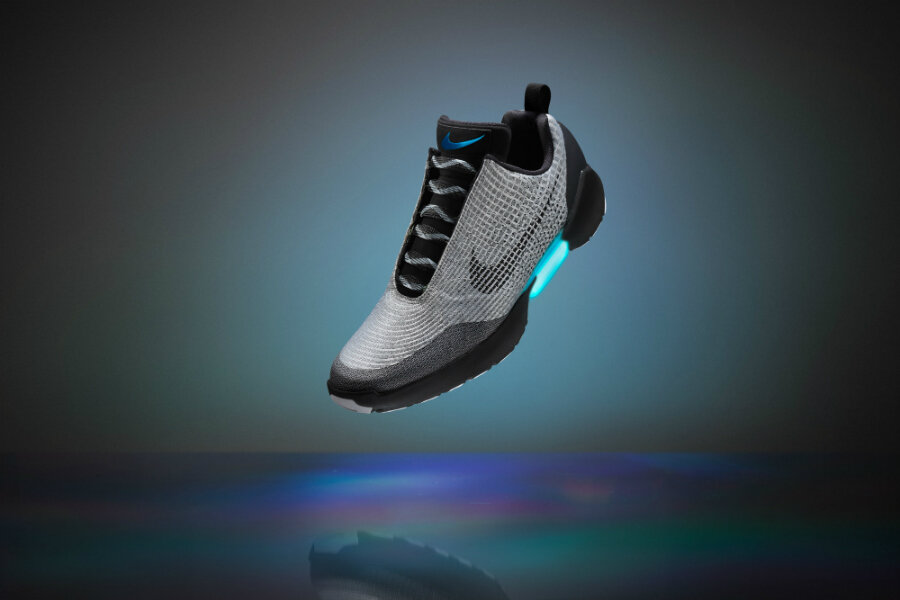How do Nike's self-lacing sneakers work?
When Marty McFly put on his Nike sneakers in "Back To The Future" the soles lit up and laces sprung to life and laced themselves. Over at Nike’s research and development in Beaverton, Ore., the real lab engineers were inspired.
Now after 28 years of brainstorming and 11 years of research and development, Nike is releasing its fully functioning, self-tying shoes at select stores throughout the United States on Nov. 28. The HyperAdapt 1.0 shoes employ what Nike calls “adaptive fit” technology in order to adjust to the individual wearer’s feet and aside from flashy LED lights they have a relatively simple design.
“We’re talking about a project that’s maybe the most difficult in the history of footwear,” Nike shoe designer Tinker Hatfield told Wired. “I’m more excited about this than any project I’ve ever been involved with.”
The project was Mr. Hatfield’s brainchild, but realized by Tiffany Beers, engineer and innovator for Nike. Years of trial and error lead her to create a shoe equipped with a pressure sensor, rechargeable lithium-polymer battery, lightweight micromotor, and cable system to adjust the fit as the wearer puts it on.
The tongue of the shoe appears to have laces, but they serve more as a visual indication of how tight or loose they are to the wearer. The fit of the shoe is actually controlled by a cable system that is woven into the polyester mesh of the shoe’s upper.
Currently there is a button on the side of the shoe that the wearer can push when they want the shoes tighter or looser, but the team at Nike is already working on HyperAdapt 2.0 that will adjust in real time.
“I want to know every challenge our consumers are going to face” Ms. Beers, who wears a pair of the shoes she designed constantly, told Wired. “I just want to know everything in order to make it better.”
The shoes emit a futuristic whirring sound when you put them on and the battery will last for about two weeks before needing to be recharged for about two hours. Although the shoes are designed in a simple black, white, or grey there are some naysayers within Nike who dismiss the project as a gimmick.
But early all wearable tech has had its share of skeptics at the outset and that hasn't stopped innovators from continuing to try to marry form, function, and fashion.
In May of this year, two University of Washington students invented SignAloud gloves that can translate the hand gestures of American Sign Language into English speech in order to make it easier for deaf people to communicate with hearing people who do not speak ASL.
At Stanford University, researchers have invented a fabric that actively draws heat away from the body and another fabric that helps the body retain heat with the goal of decreasing the need for energy sapping air conditioning and heating systems respectively.
As with these other inventors, Nike designed the shoes to solve a performance problem for athletes.
“If your feet are not healthy, there’s kind of a chain reaction, and your entire body can get out of whack,” Hatfield told Wired. Take pro basketball players, he says: “If you’re playing for three hours, there might be only an hour of it when you actually need your sneakers tight. The rest of the time, when you’re standing around for free throws, jump balls, sitting on the bench, you should loosen your shoes up.”






